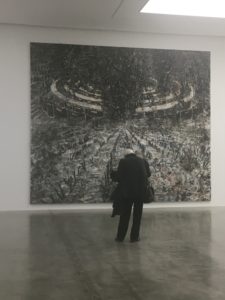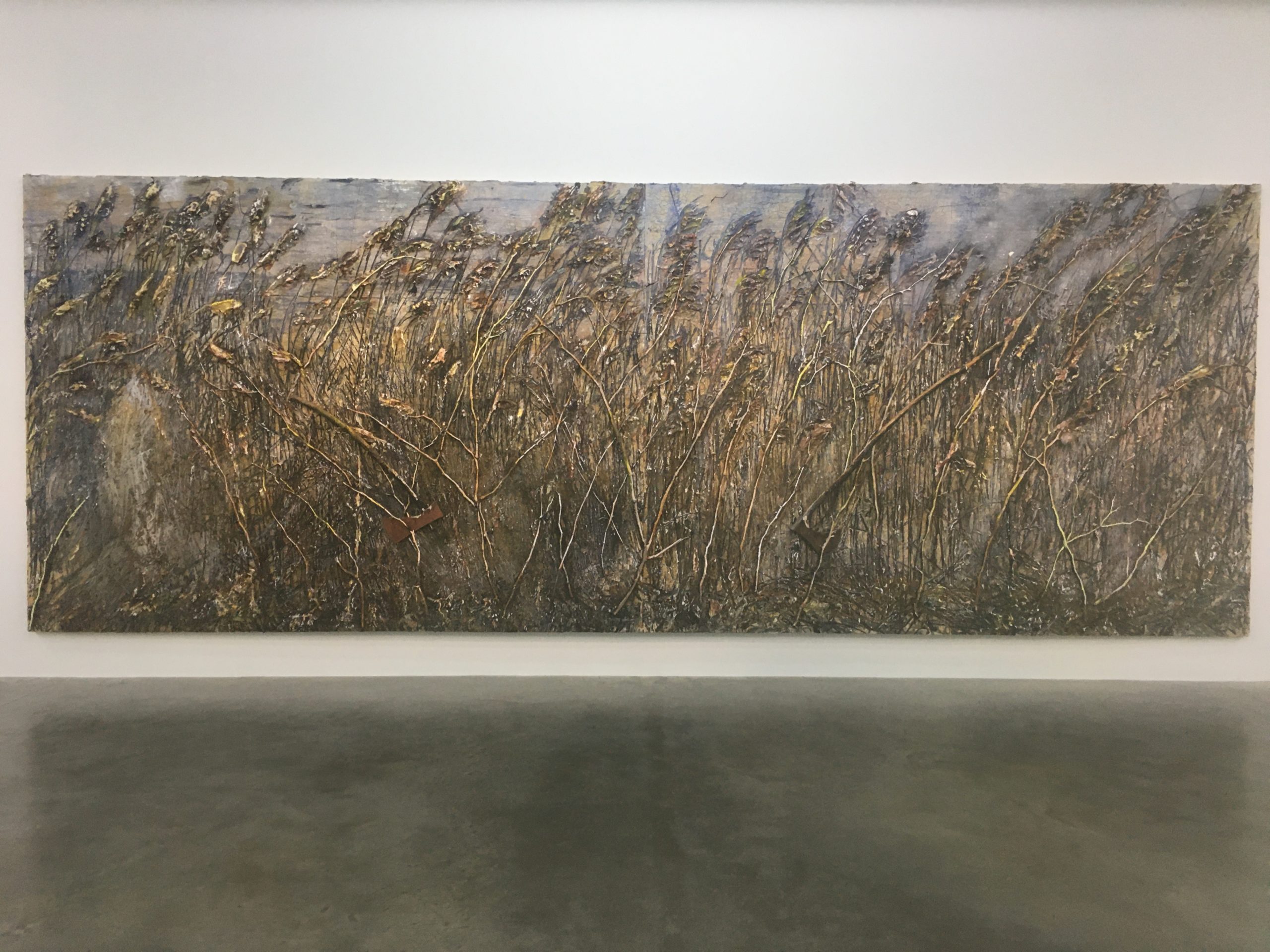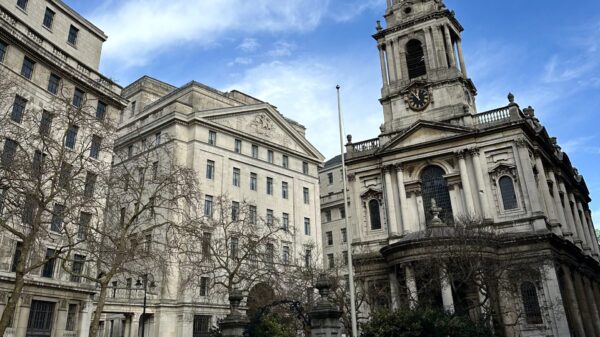Anselm Kiefer’s new works in an exhibition at White Cube Bermondsey presented to me the frequently asked question of how relevant the context of an artist’s life and intention is to an artwork. The exhibition features interests relevant in much of Kiefer’s work including mythology, astronomy and history. In the gallery’s corridor, the first installation shows thirty vitrines filled with painted cables arranged over panels stained, overworked and crumbling. With no previous knowledge of the string theory that Kiefer is exploring, I viewed the pieces as objects appreciable from afar that grow increasingly fraught and confusing as they are approached.
The hand-written equations on the vitrines’ glass fronts appeared to me to be only an addition to the chaos of the works, little more than aesthetic markings. Perhaps this is symptomatic of any uneducated look at complex equations. Thanks to the exhibition guide available at the front of the gallery, I learned their relevance as reference to string theory and the names of the three chief Norns. Though it’s unquestionable that I was able to find individual understanding and appreciation of the pieces without knowing about the women rulers of fate in Norse mythology, I began to wonder whether my unknowledgeable takeaway was valid.
In south gallery I of White Cube, three works almost seven meters across line the walls. There is a certain majesty to any piece of such a size, and Kiefer’s use of 3D natural materials that exceeded the boundaries of the canvasses only furthered this effect. He uses predominantly bleak colouring to depict desolation and aftermath in huge, bleak landscapes. Charring seems to prove the works to be representative of the fallout of something huge, though splashes intense primary colours, not evident in Kiefer’s more muted earlier works, raises the question of how continuous the events that altered his landscapes are. Though the works seem to depict historical sites of destruction, the sustaining flashes of unnatural colour suggest that this destruction is ongoing; the paradoxical circularity of beginning and end interacting as one.

Also featured is Ramanujan Summation – 1/12 (2019). If the scale of the Superstrings was impressive, this piece became all-encompassing as its sheer size drew viewers into the painting. The ashen landscape is drawn over with astrological notations. Again, this detail was unknown but not unnoticed: the meaning of the writings meant little to me, but their presence still felt relevant. Although viewers might not pick up on the literal reference to the sky, the piece connects earth and sky in a brooding vortex. The title of the piece is in fact named after a mathematical technique that assigns value to infinite series. Retrospectively, it’s hard to know whether my impression of the painting remains organically my own, or if this new understanding projects my sense of never-ending evolution.
Basically, appreciation of the exhibition, which is running until 26th January, is difficult to define. Has researching Kiefer’s references and interests changed the emotion I remember or confirmed its validity? Further, is there a ‘valid’ response to abstract work such as Kiefer’s? It’s hard to know how prior knowledge might have impacted my viewing but the overall impression would likely be the same. The scale of the works encompasses viewers, yet belittles them, the intense feeling in Kiefer’s landscapes is immutable by context. Ultimately then, although there is validity in retrospective research into the exhibition and Kiefer’s references, viewers shouldn’t be put off by the complexity of his references. Much can be taken from the art as pure aesthetic work, emotive beyond any perceived responsibility to honour Anselm Kiefer’s intentions.








